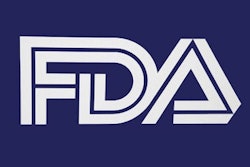
Low-dose CT (LDCT) may have another benefit in addition to lung cancer screening: breast density assessment, according to a new study published online in Academic Radiology.
Breast density measurements performed on LDCT lung cancer studies had excellent correlation with those generated from breast MR exams -- making the technology an efficient way to get more healthcare bang for the buck, according to lead author Dr. Jeon-Hor Chen, from the University of California, Irvine (UCI) and E-Da Hospital in Kaohsiung, Taiwan, and colleagues (Acad Radiol, June 6, 2016).
 Dr. Jeon-Hor Chen from UCI and E-Da Hospital.
Dr. Jeon-Hor Chen from UCI and E-Da Hospital."Current methods of measuring breast density are based on mammography, which has limitations due to the fact that it's a 2D modality and thus affected by the problem of tissue overlap," Chen told AuntMinnie.com. "One of our goals at UCI has been to develop technology to assess breast density based on 3D imaging, and it occurred to us that LDCT may offer an opportunity to measure women's breast density at the same time they're being screened for lung cancer."
Opportunity awaits
Since the U.S. Centers for Medicare and Medicaid Services (CMS) announced last year that it would reimburse for LDCT, use of the technology has been steadily increasing, with women making up more than 40% of patients screened, the authors wrote. Combine this with the fact that breast density is now considered a risk factor that must be taken into account at breast cancer screening, and the ability to estimate density at the same time as lung cancer risk makes good sense, according to the group.
For the study, the researchers included 40 women who underwent both LDCT and breast MR between February 2009 and October 2011. The women chose to receive LDCT for lung cancer detection and MR for breast cancer detection; both exams were performed within a year of each other.
Chen and colleagues then compared breast volume, fibroglandular tissue volume, and percent breast density measured on LDCT and MR by intraclass correlation coefficient (ICC); ICC values between 0.75 and 1.00 were considered excellent for correlation.
The researchers found that both the measurements taken and the ability of multiple users to produce similar results (both for their own interpretations and those of their peers) for the two modalities were highly consistent.
| ICC of breast measurements and operator reproducibility between LDCT and MR | ||
| Breast tissue measurements | Reader reproducibility | |
| Breast volume | 0.95 | 1.0 |
| Fibroglandular tissue volume | 0.97 | 0.98 |
| Percent breast density | 0.97 | 0.97 |
Too soon for the U.S.?
Widespread use of LDCT in the U.S. to assess breast density may take a while, partly because LDCT would need to be technically improved to be most effective for this application, and partly because the patient population for lung cancer screening in the U.S. is limited, according to Chen.
"In the U.S., only high-risk patients have LDCT," he said. "In Asia, it's easier to use the technology to measure breast density because more of the general population undergoes the exam."
In any case, more research is needed to confirm these initial findings, the authors wrote.
"The preliminary results found that the LDCT-measured density showed a high correlation with MR-measured density," they concluded. "[But to] further verify the role of LDCT-measured breast density for clinical practice, future large series studies are needed."





















